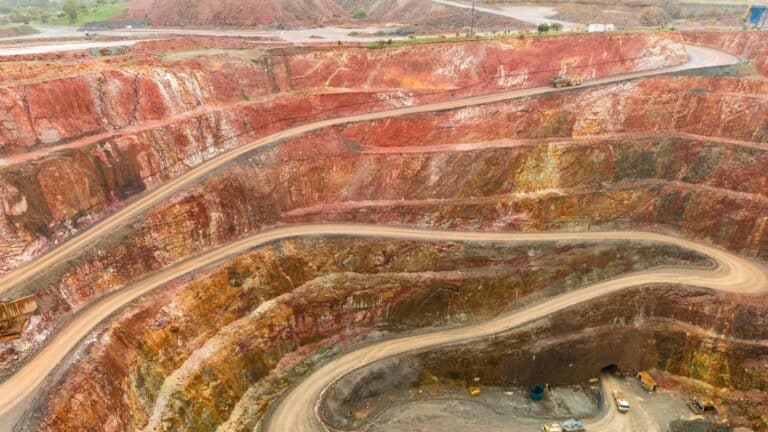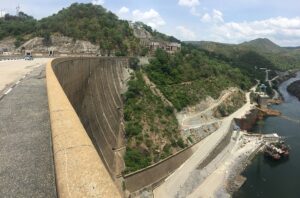This website uses cookies as well as similar tools and technologies to understand visitors’ experiences. By continuing to use this website, you consent to Columbia University’s usage of cookies and similar technologies, in accordance with the Columbia University Website Cookie Notice.
Energy Explained
Insights from the Center on Global Energy Policy
Critical Minerals to the Rescue? Zambia and Zimbabwe Implement Divergent Policies Amid Climate Upheaval
In late 2022, record-low water levels at Lake Kariba, the world’s biggest dam reservoir, compelled Zimbabwe to stop generating electricity at the Kariba Dam’s South Power Station.[1] Meanwhile, neighboring Zambia was forced to resort to water rationing, worsening an economic crisis during which it defaulted on its foreign debt obligations.[2] Yet while struggling to adapt to climatic changes, both countries possess world-class mineral reserves that could boost global energy transitions that depend on them. The governments in Harare and Lusaka are responding to these challenges through very different geopolitical strategies.
Climatological shifts are destabilizing Southern African states. Catastrophic flooding, drought, and powerful cyclones—especially Kenneth and Idai (2019), Ana (2022), and most recently Freddy (2023), likely the longest tropical cyclone ever recorded[3]—are now yearly occurrences. These have killed thousands and ruined the livelihoods of millions, as cropping seasons are disrupted, harvests are destroyed, and food markets face declining supply and interruptions in trading, adding to global inflationary pressures.[4] The impact on the energy sector has also been severe, particularly because of the region’s dependency (more than 20 percent) on hydropower in its energy mix. Cyclone Idai, for instance, reduced Malawi’s capacity to generate electricity from its dams by 80 percent; led to a loss of 1,100 megawatts (MW) of power, as transmission lines between Mozambique and South Africa were damaged; and increased demand for diesel, as households and businesses doubled down on back-up generators to hedge against further failures of national grids.[5] In the case of Zambia and Zimbabwe, who jointly manage the Zambezi River Authority and for whom the Kariba Dam has for years provided the bulk of electricity, declines in precipitation have meant that its reservoir has not been at full capacity since 2011.[6] Decreasing rainfall constituted the proximate cause of the 2022–2023 shutdown, which raises questions about the future of hydro in Southern Africa in an age of intensifying climatic changes.[7]
Rolling blackouts—sometimes up to 20 hours per day[8]—in Zambia and Zimbabwe have proved devastating for local agriculture and industry. But they also crucially affect regional and global energy transitions.
Kariba Dam between Zambia and Zimbabwe. Photo by JonGT/Wikimedia Commons.
Mineral Mining amid Electricity Rationing
Zambia has for a century been a supplier of copper to the world economy, with mining giants such as First Quantum Minerals, Barrick Gold, and Glencore active in country.[9] However, mining is a particularly energy-intensive activity and mining companies have not escaped electricity rationing following the water shortages at Kariba.[10] Such cuts have come at an inopportune time as global demand for copper is rising and set to increase threefold by 2040, given the mineral’s pivotal role in electrification processes around the world.[11] Expanding the availability of solar cells, electric cables, and vehicle batteries required to decarbonize energy and transportation systems depends on copper producers such as Zambia being able to reliably supply developed and developing economies alike. Many Zambian citizens expect their government to leverage profits from supplying global energy transitions—80 percent of the country’s export revenues come from copper—to finally bring meaningful local development to the majority of Zambians, who have rarely benefited from commodity exports.[12] But both the supply of minerals and use of their revenues presuppose bolstering reliable power generation, a goal that has remained elusive, much to the frustration of both households and companies in Zambia.
Zimbabwe’s economy also depends heavily on mining, which generates about 12 percent of gross domestic product and is the main export earner of the internationally sanctioned state. Moreover, Zimbabwe has some of Africa’s largest deposits of coal, diamonds, and gold, as well as vast quantities of chromium, nickel, and platinum, which are crucial for many clean energy technologies. Its lithium in particular is considered world class; despite modest investment levels so far, the country is the world’s fifth-largest lithium producer, and President Emmerson Mnangagwa hopes to soon raise US $10 billion annually in revenues from lithium exports.[13] Given how tight lithium supply chains are in the emerging geopolitics of critical minerals, exporting such critical minerals could potentially help Zimbabwe escape its status as a pariah state, largely isolated by Western politicians and investors, and give it leverage in international politics.[14] Yet with Zimbabwean mines experiencing power cuts of 6 to 12 hours amid the protracted energy crisis, dreams of lithium and platinum as the centerpiece of a new development strategy seem ambitious.[15]
Two Approaches to Financing Mineral Extraction and Energy Buildout
Despite their similar predicaments as water- and energy-insecure economies with mining sectors of global significance, the governments of Zambia and Zimbabwe are responding very differently to these interrelated challenges. Since becoming Zambian president in 2021, Hakainde Hichilema has sought to pragmatically exploit global interest in his country’s mineral wealth.[16] Central to this strategy has been reaffirming Zambia’s credentials as a willing partner of Western mining interests.[17] This contrasts with the rhetoric of Hichilema’s two predecessors, who belonged to the more protectionist Patriotic Front that ruled Zambia from 2011 to 2021 and was regarded by international investors as preoccupied with domestic politicking and, during the presidency of Edgar Lungu, remarkably accommodative of Chinese mercantile interests.[18] Simultaneously, while clearly positioning Zambia in the last two years as a close friend of the West, the Hichilema government has nonetheless reassured China—the country’s largest bilateral creditor and second largest importer and exporter—that Beijing remains essential to its long-term trade and investment plans.[19] Such repositioning has paid some dividends: Zambia has gotten both its Paris Club and Chinese creditors to agree to deep debt relief for the country under the International Monetary Fund (IMF)-led Common Framework for Debt Treatment, which could finally free up fiscal space for energy projects.[20] Moreover, the Biden administration—which has sent Vice President Kamala Harris and Treasury Secretary Janet Yellen, as well as other senior officials, to Lusaka in the last year—has committed to helping Zambia develop a supply chain for electric vehicle batteries so the country will no longer just export raw minerals.[21] The Zambian government has also exploited the seeming need in the United Arab Emirates—the host of the next global climate summit, COP 28—to be seen to deliver tangible benefits to developing countries: It has struck a US $2 billion agreement for Emirati solar investments across Zambia.[22]
By contrast, the government in Harare remains at odds with much of the US-led international community on numerous issues, including human rights and economic governance.[23] Enduring sanctions against and isolation of Zimbabwe are one reason for underinvestment in the country’s energy sector and associated problems of obsolete technology, a need for spare parts, and much else.[24] Moreover, Zimbabwe’s staggering debt of US $17 billion and its arrears to the IMF and World Bank preclude it from receiving fresh capital from multilateral development banks[25] that could be used for expanding electricity access and putting energy generation on a more durable footing. Instead, the Mnangagwa government believes that the sheer size of the country’s mining reserves will prove irresistible to foreign investors and that Zimbabwe’s constraints on exporting raw lithium will force them to process critical minerals locally, simultaneously assuring revenues for the country’s cash-strapped treasury and turning Zimbabwe into a regional lithium superpower.[26] The opening in July 2023 of a US $300 million lithium processing plant and Chinese offers to build a 1,000 MW solar plant near the Kariba Dam and to invest in Zimbabwean solar panel manufacturing capacity are cited as evidence of the concrete benefits the government’s approach will bring.[27] Contrary to more investor-friendly Zambia, Zimbabwe is betting that export bans on raw ores, unilateral seizures of revenues from huge private carbon offset schemes, and other forms of resource nationalism will underwrite state-led development and allow the country to capture a greater slice of the coming global climate action bonanza.[28]
The early results of Lusaka’s strategic balancing of global interests seem more promising than the take-it-or-leave-it hardline being pursued by Harare. But caution and historical awareness are in order: in positioning themselves vis-à-vis global energy transition dynamics in their respective ways, Zambia and Zimbabwe are doubling down on the same policies that each country has prioritized for much of the last 30 years, with disappointing results for both.[29] That they appear to be doing so once again, without a fundamental reckoning with decades of mismanagement of natural wealth and the capture of resource rents by political elites and their foreign allies that have accompanied efforts to develop through exporting minerals, is noteworthy.[30] Meanwhile, the onset of a new El Niño event is likely to intensify drought conditions across Southern Africa and to shrivel Lake Kariba once more in 2023.[31] Both the Zambian and Zimbabwean populations know that rainfall decline was only the immediate trigger of the Kariba shutdown; political economy questions remain the elephant in the room when their governments host investor delegations and advertise how their critical minerals can provide invaluable inputs for global energy transitions.
Notes
[1] https://www.energypolicy.columbia.edu/publications/kariba-dam-failing-what-means-african-hydropower/
[2] https://farmersreviewafrica.com/climate-change-blacks-out-zambia/
[3] https://public.wmo.int/en/media/news/tropical-cyclone-freddy-may-set-new-record
[4] https://executiveboard.wfp.org/document_download/WFP-0000129015
[5] https://www.iea.org/reports/climate-impacts-on-african-hydropower/climate-impacts-on-african-hydropower#abstract
[6] https://observablehq.com/@westernpower/kariba
[7] https://www.energypolicy.columbia.edu/publications/kariba-dam-failing-what-means-african-hydropower/; https://www.sciencedirect.com/science/article/abs/pii/S0301421516306656
[8] https://apanews.net/2022/12/07/anxiety-as-zimbabweans-endure-20-hour-power-cuts/; https://www.bloomberg.com/news/articles/2022-12-05/depleted-kariba-dam-leaves-zimbabweans-without-power-for-19-hours-a-day
[9] https://www.mining-technology.com/data-insights/copper-in-zambia/
[10] https://www.reuters.com/business/energy/zambia-extends-electricity-rationing-mining-firms-2023-01-10/
[11] https://www.iea.org/reports/the-role-of-critical-minerals-in-clean-energy-transitions/mineral-requirements-for-clean-energy-transitions#abstract
[12] https://theconversation.com/climate-change-action-could-set-off-a-copper-mining-boom-how-zambia-can-make-the-most-of-it-195764
[13] https://africa.businessinsider.com/local/markets/zimbabwe-bets-on-lithium-to-boost-mining-sector-and-economy/4y8304h
[14] https://www.tandfonline.com/doi/full/10.1080/03932729.2020.1786926
[15] https://www.marketplace.org/2023/04/05/in-zimbabwe-rolling-blackouts-hobble-mining-goals/
[16] https://www.chathamhouse.org/2023/03/zambias-developing-international-relations
[17] https://www.theafricareport.com/271338/zambia-hichilema-says-hes-resetting-lusakas-relationship-with-china-us/
[18] https://www.chathamhouse.org/2023/03/zambias-developing-international-relations
[19] http://zm.china-embassy.gov.cn/eng/sbgx/jm/202209/t20220930_10775870.htm; https://chinaglobalsouth.com/2023/06/26/hichilema-refutes-western-accusations-china-was-to-blame-for-delays-in-zambias-debt-restructuring/
[20] https://www.imf.org/en/News/Articles/2023/06/22/pr23235-imf-welcomes-debt-treatment-agreement-reached-by-zambia
[21] https://www.state.gov/the-united-states-releases-signed-memorandum-of-understanding-with-the-democratic-republic-of-congo-and-zambia-to-strengthen-electric-vehicle-battery-value-chain/; https://www.economist.com/middle-east-and-africa/2023/02/28/how-america-plans-to-break-chinas-grip-on-african-minerals
[22] https://www.lusakatimes.com/2023/01/17/zambia-and-uae-sign-landmark-agreement-for-2-billion-renewable-energy-investment-2/
[23] https://www.theeastafrican.co.ke/tea/rest-of-africa/mnangagwa-has-no-appetite-for-reforms-us-says-3991904
[24] https://www.ohchr.org/en/documents/country-reports/ahrc5133add2-visit-zimbabwe-report-special-rapporteur-negative-impact
[25] https://www.afdb.org/en/news-and-events/press-releases/time-walk-zimbabwe-african-development-bank-president-says-roundtable-zimbabwes-debt-arrears-clearance-61819
[26] http://www.zim.gov.zw/index.php/en/news-room/latest-news; https://african.business/2023/01/resources/will-zimbabwes-ban-on-unprocessed-lithium-exports-advantage-china; https://www.independent.co.uk/news/zimbabwe-ap-harare-chinese-emmerson-mnangagwa-b2370061.html
[27] https://apnews.com/article/lithium-processing-plant-chinese-92ccd10bd4ba028bc38fdadcdffc06da and https://chinadialogue.net/en/energy/zimbabwe-looks-towards-cleaner-energy/
[28] https://www.mining-technology.com/features/zimbabwe-critical-minerals-resource-nationalism/#catfish; https://www.bloomberg.com/news/articles/2023-05-18/global-carbon-market-in-turmoil-after-zimbabwe-grabs-offset-money?cmpid=BBD051923_GREENDAILY&utm_medium=email&utm_source=newsletter&utm_term=230519&utm_campaign=greendaily#xj4y7vzkg
[29] https://www.theafricareport.com/309723/south-africa-zambia-zimbabwe-blackouts-to-total-darkness/
[30] https://taxjusticeafrica.net/resources/blog/zambias-copper-amid-energy-transition-new-dawn-mining-or-repeating-past-mistakes; https://taxjusticeafrica.net/sites/default/files/publications/Taxing%20Zambia%27s%20Mining%20Sector%20for%20the%20Energy%20Transition_Full%20Report.pdf; https://www.lusakatimes.com/2023/06/19/foreign-investors-wont-reduce-poverty-or-develop-zambia/
[31] https://www.csir.co.za/climate-experts-sound-alarm-on-developing-el-ni%C3%B1o-impact-south-africa-0; https://reliefweb.int/report/world/giews-update-el-nino-return-2023-following-three-year-la-nina-phase-26-april-2023
More on Energy Explained Energy Explained
Q&A: Trump’s Executive Order on US Domestic Mineral Production
This Energy Explained post represents the research and views of the author. It does not necessarily represent the views of the Center on Global Energy Policy. The piece...
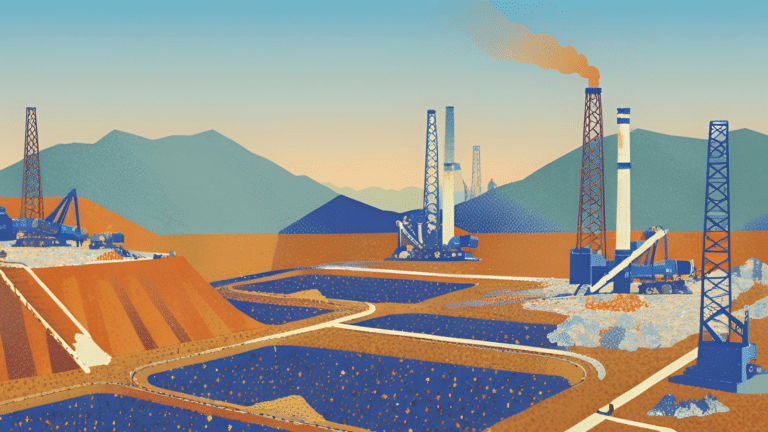
The Impact of Trump Tariffs on US-Canada Minerals and Metals Trade
This Energy Explained post represents the research and views of the author. It does not necessarily represent the views of the Center on Global Energy Policy. The piece...

Energy and Climate Issues During the Trump Administration’s First 100 Days
President Donald Trump has made energy a clear focus for his second term in the White House. Having campaigned on an “America First” platform that highlighted domestic fossil-fuel growth, the reversal of climate policies and clean energy incentives advanced by the Biden administration, and substantial tariffs on key US trading partners, he declared an “energy emergency” on his first day in office.

Insights from the US and India for Electricity Open Access in Kenya and South Africa
Kenya and South Africa have recently started moving toward an open access regime in their electricity sectors, while the US and India have been on this path for over two decades.

Relevant
Publications
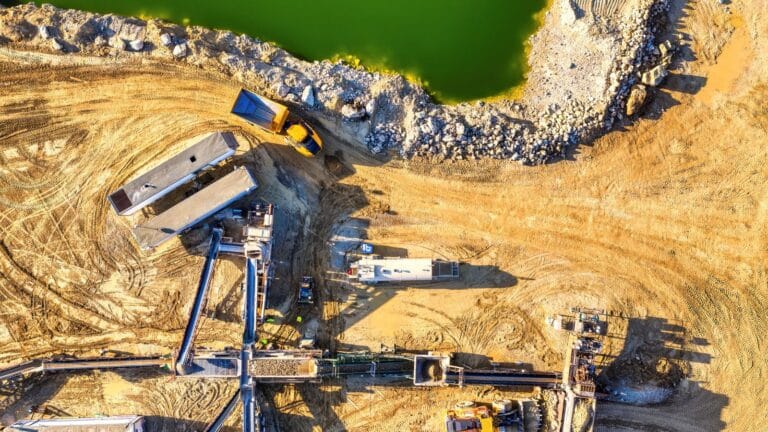
With or Without Tax Credits, a US-Indonesia Critical Minerals Agreement Could Raise Environmental Standards and Diversify Supply
This commentary addresses the importance of Indonesian nickel supply to US climate goals, and why a US-Indonesia critical minerals agreement could be beneficial for both countries.
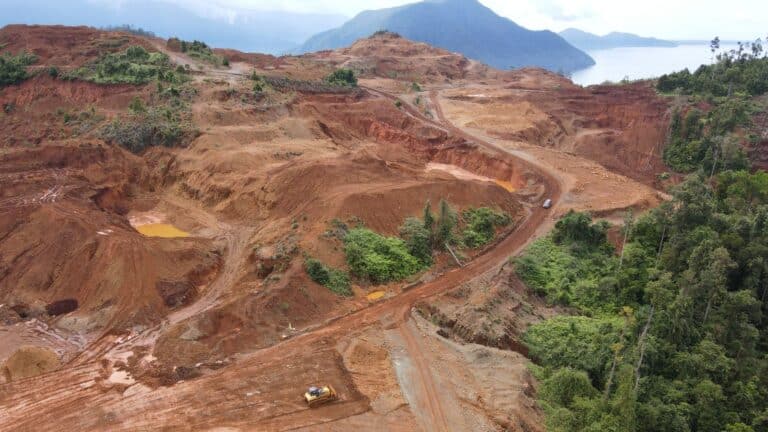
Financing the Responsible Mining of Critical Minerals Using Thematic Bonds: Roundtable Summary
The mining sector continues to face headwinds in attracting the necessary investments to meet the growing demand for critical minerals in clean energy technologies.
